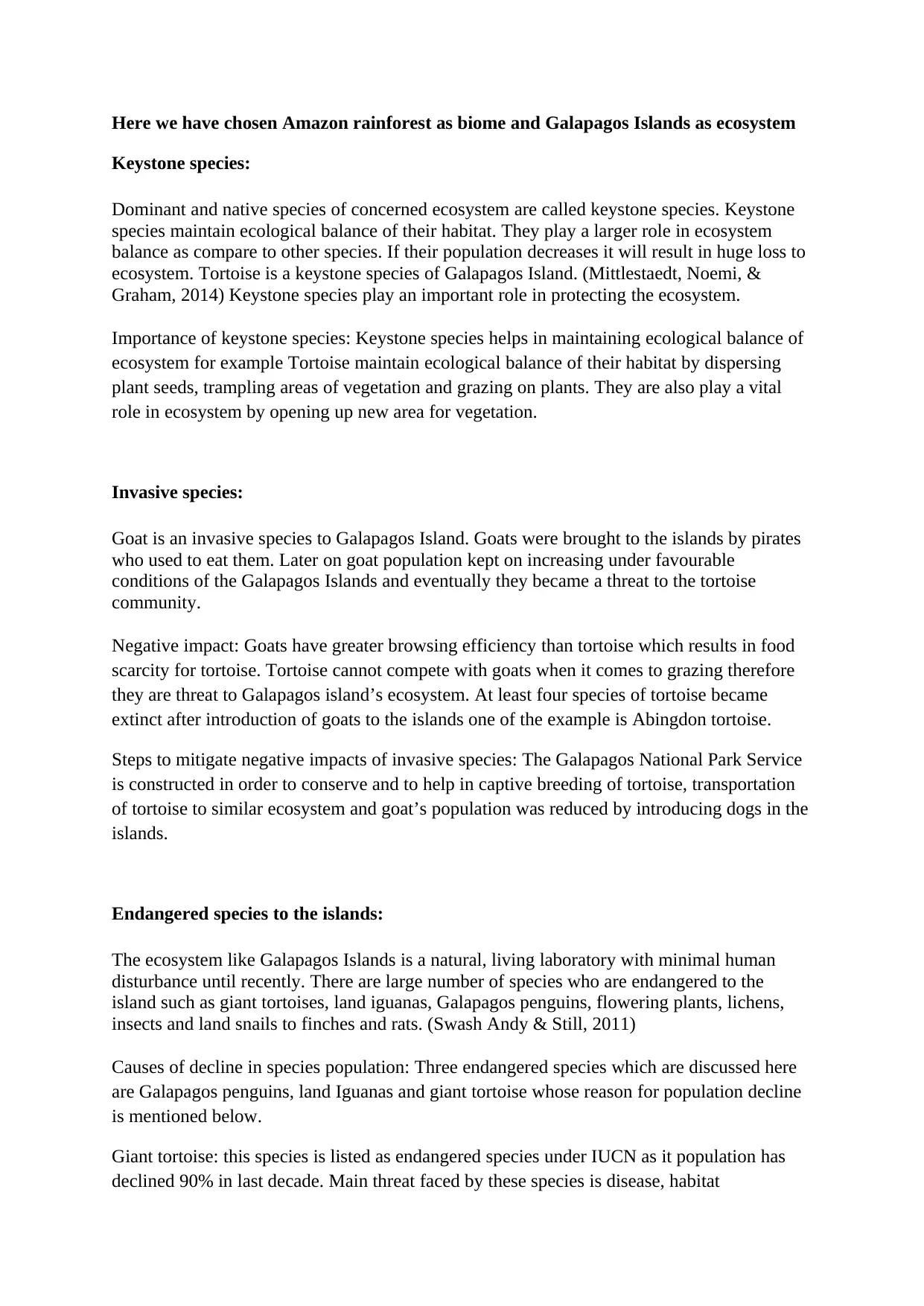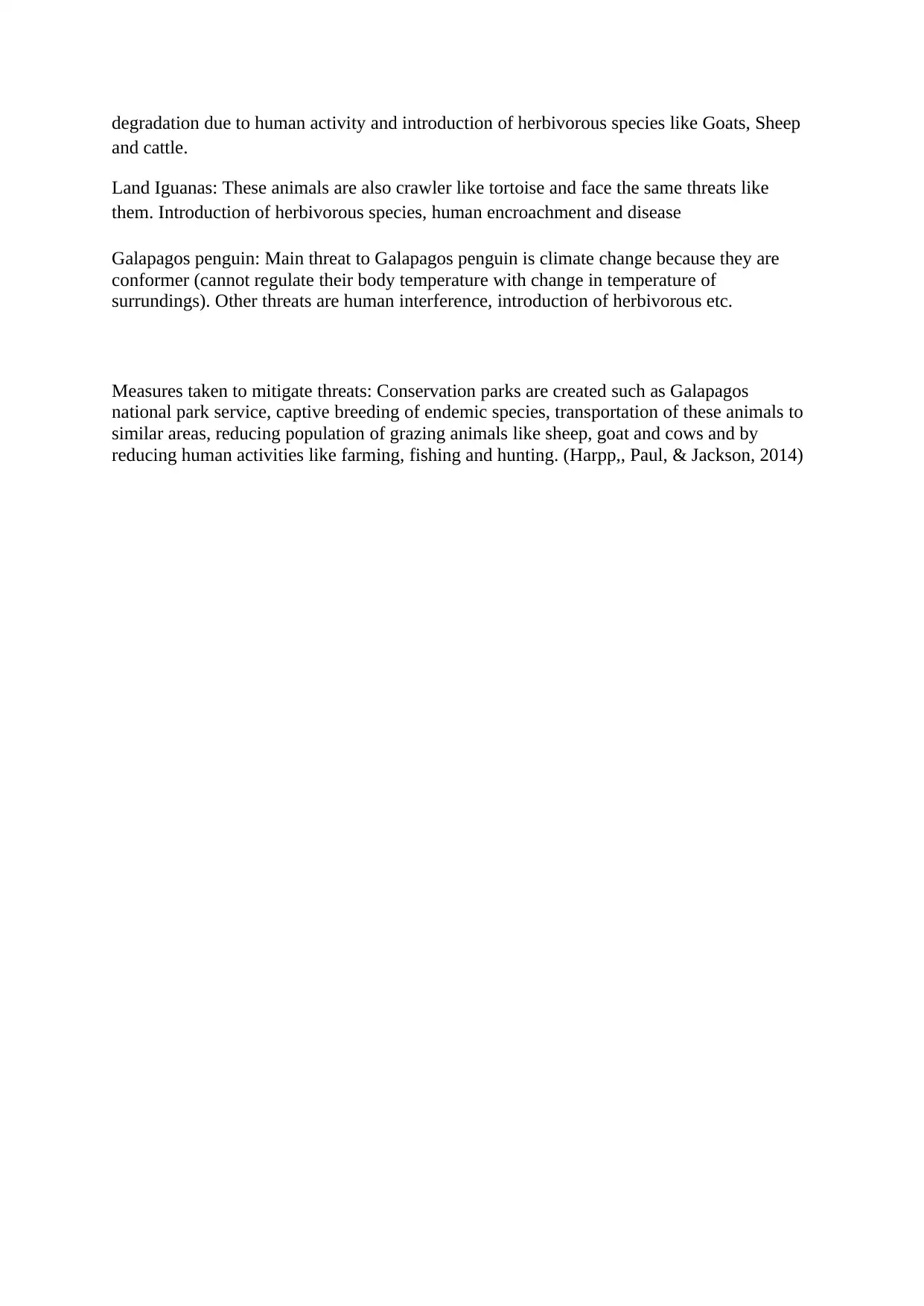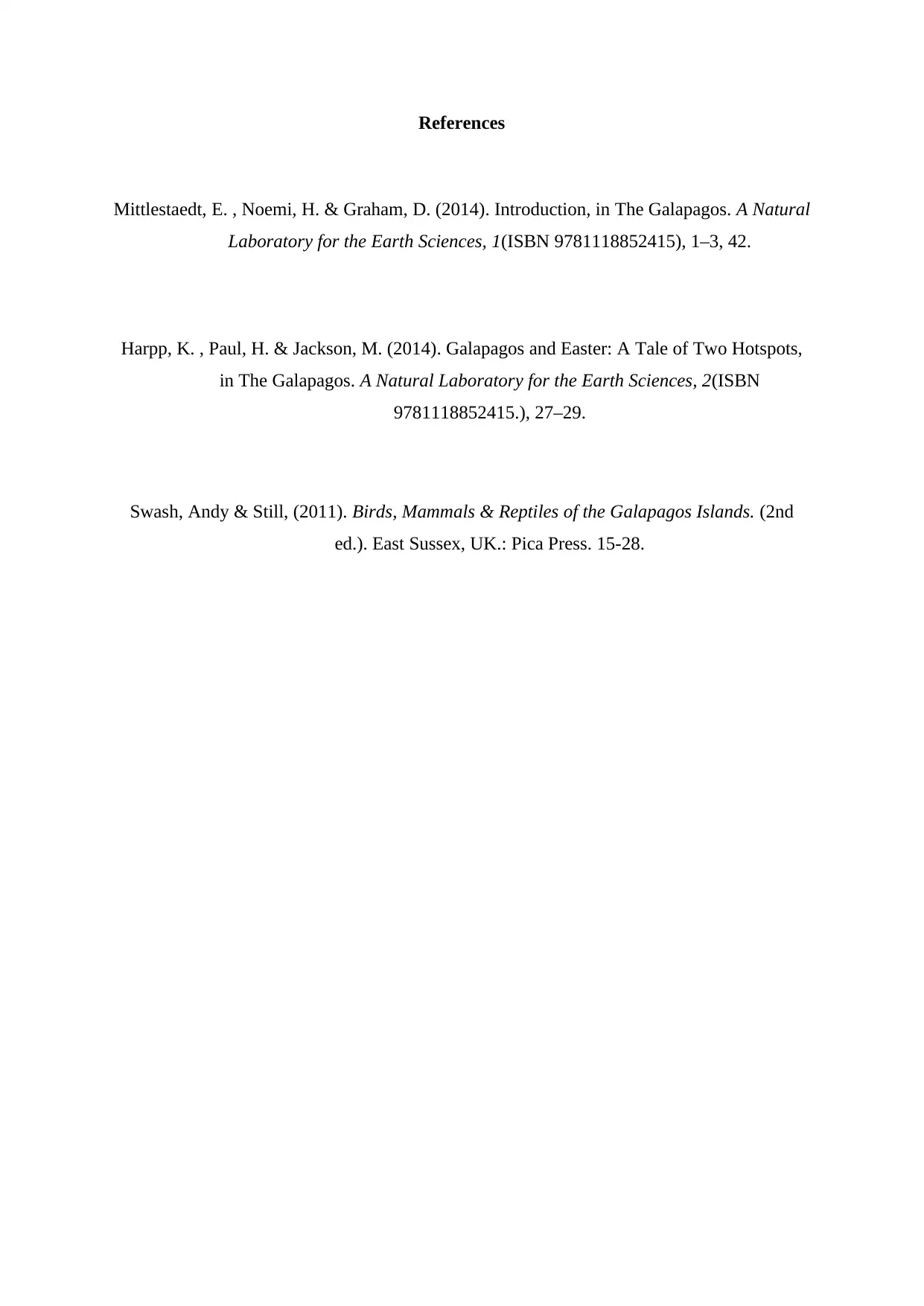Environmental Science Report: Keystone Species of Galapagos Islands
VerifiedAdded on 2022/08/17
|3
|717
|18
Report
AI Summary
This report provides an overview of the Galapagos Islands ecosystem, focusing on the keystone species, specifically the tortoise. It highlights the importance of keystone species in maintaining ecological balance and discusses the negative impacts of invasive species, such as goats, on the tortoise population and the broader ecosystem. The report details the threats faced by endangered species, including the giant tortoise and land iguanas, and the Galapagos penguin, and the causes of their population decline, which include disease, habitat degradation, and climate change. It concludes by outlining the measures taken to mitigate these threats, such as conservation parks, captive breeding programs, and population control of invasive species, emphasizing the ongoing efforts to protect and preserve the unique biodiversity of the Galapagos Islands. The report references several sources to support its findings.
1 out of 3




![[object Object]](/_next/static/media/star-bottom.7253800d.svg)